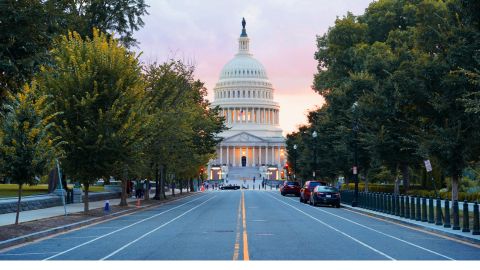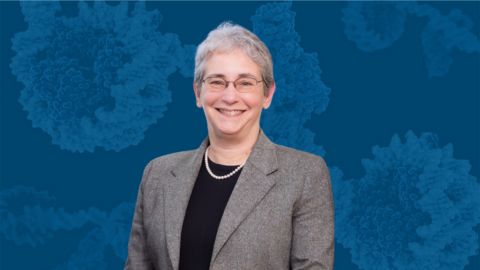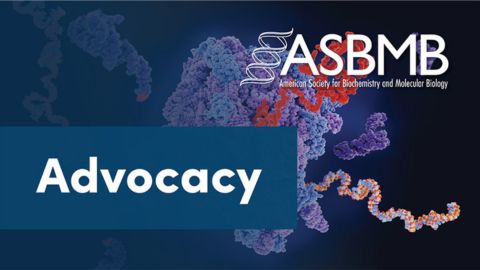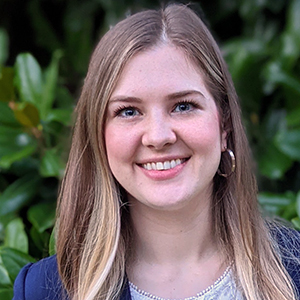ASBMB calls for changes to NIH fellowship review
The American Society for Biochemistry and Molecular Biology submitted five policy recommendations last week to the National Institutes of Health Center for Scientific Review advocating for changes to the National Research Service Award Fellowship application and review process to improve equity and reduce bias:
- Allow applicants to explain the impacts of the COVID-19 pandemic on their careers.
- Allow victims of harassment to explain disruptions to their careers.
- Incorporate implicit bias training for reviewers.
- Reduce emphasis on undergraduate coursework.
- Reduce the emphasis on the principal investigator’s training track record.
Rick Page of Miami University, who leads the ASBMB Public Affairs Advisory Committee, said the recommendations were written with this in mind: “A community of researchers with greater diversity of voices, backgrounds and experiences produces research that is more innovative and more impactful.”
He emphasized: “Increased equity in fellowship applications review will improve diversity of awardees and reap positive impacts on the careers of a wider range of trainees and long-term positive impacts for the scientific research enterprise.”
The NIH CSR assesses an applicant’s potential to contribute significantly to biomedical research based on five main criteria:
- Applicant
- Sponsor(s), collaborators and consultants
- Research training plan
- Training potential
- Institutional environment and commitment to training
While past success can be indicative of future success, this approach disadvantages applicants with massive potential who have faced significant challenges outside their control and/or were not exposed to the same opportunities. A CSR Advisory Council working group recently voiced concerns that the current evaluation criteria make it difficult to assess an applicant’s potential, disadvantage smaller schools with less resources than larger institutions, and cause junior faculty to feel unlikely to succeed in sponsoring an applicant.
On Jan. 6, Bruce Reed, deputy director of the CSR, authored a blog post requesting feedback from the scientific community on how to improve the fellowship review process.
“In answering, think about the characteristics of strong applicants, sponsors, and training programs and the challenge of identifying the applications that have the greatest potential to develop independent, productive research scientists,” he wrote.
ASBMB PAAC member Jeff Brodsky of the University of Pittsburgh, said he suspects “most faculty mentors would agree that the top trainees are those who fearlessly attack difficult problems and, through a combination of curiosity, creative insights and struggle, end up succeeding.”
However, Brodsky said, it’s tough to gauge that in an application.
“I always appreciate the letter or mentor’s statement that discusses how a tough barrier was encountered and overcome as a result of these traits,” he said. “Instead, too many written analyses of a candidate focus only on the accomplishments and offer the impression that results came with ease.”
Other societies, such as the Federation of American Societies for Experimental Biology, have shared similar concerns and have touted the benefits of shifting away from a dyadic mentorship structure in support of mentorship networks.
In its recommendations for CSR, FASEB wrote: “(T)he National Academies of Sciences, Engineering and Medicine report ‘The Science of Effective Mentorship in STEMM’ highlights the benefits of nondyadic mentoring structures. The current emphasis on the sponsor does not create an expectation that trainees sustain a meaningful mentor network.”
Read the ASBMB’s full comments here.
Enjoy reading ASBMB Today?
Become a member to receive the print edition four times a year and the digital edition monthly.
Learn moreGet the latest from ASBMB Today
Enter your email address, and we’ll send you a weekly email with recent articles, interviews and more.
Latest in Policy
Policy highlights or most popular articles

Councilors advocate for science on Capitol Hill
ASBMB Councilors meet with their elected officials to advocate for basic scientific research funding and training the next generation of scientists.

Hope for a cure hangs on research
Amid drastic proposed cuts to biomedical research, rare disease families like Hailey Adkisson’s fight for survival and hope. Without funding, science can’t “catch up” to help the patients who need it most.

Supporting science through advocacy and community building
ASBMB calls on scientists to take action as funding cuts and policy shifts threaten the U.S. research enterprise, emphasizing the power of community advocacy and persistence in protecting the future of science.

Seven steps to advocating in your home state
Find out how to schedule, prepare for and conduct a productive district office meeting to communicate the importance of fundamental scientific research funding to your representatives.

ASBMB members call for funding and agency support amidst uncertainty
In 60 meetings on Capitol Hill, scientists urge legislators to reaffirm support for scientific innovation

Embrace your neurodivergence and flourish in college
This guide offers practical advice on setting yourself up for success — learn how to leverage campus resources, work with professors and embrace your strengths.

